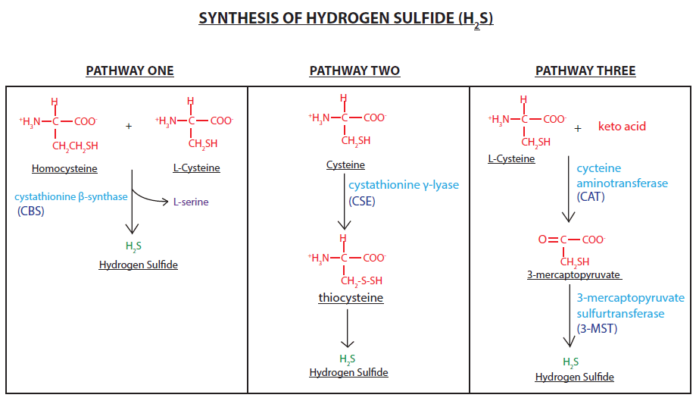Last Updated on July 3, 2023 by
Hydrogen sulfide is a gas that is produced during the natural process of decomposition of organic materials in the presence of water. It usually occurs as a result of spoilage or corrosion, and can also be created by bacteria when they break down organic matter. Although it would seem to be something you want to avoid, hydrogen sulfide has some industrial uses, and so must be removed from natural gas before it can be used. It is a toxic gas that can cause severe health effects, such as nausea, vomiting, and respiratory failure in humans. So what does it take to remove hydrogen sulfide from natural gas? undefined Hydrogen Sulfide is a poisonous gas that is formed when natural gas reacts with water. This article breaks down the details of what causes the formation and how to prevent it from happening. Many natural gas pipelines have valves called “h2s gas scrubber” which filter out hydrogen sulfide from the air.
Table of Contents
What is hydrogen sulfide?
Hydrogen sulfide is a colorless gas that is used as an odorant and as a chemical disinfectant. It is also known to cause corrosion of metal surfaces, unhealthy respiratory conditions, and potentially fatal reactions when in contact with certain lifeforms. This can result in death of fish and animals that are in the surrounding area. Hydrogen sulfide is a highly toxic gas that is emitted by natural gas and other sources. It smells like rotten eggs and causes respiratory problems. A sulfur compound that results from the oxidation of hydrogen sulfide to sulfur dioxide by sunlight, water vapor, or oxygen in air is called hydrogen sulfate. Hydrogen sulfide is a colorless, flammable gas that is commonly found in natural gas. It is created when methane reacts with oxygen and water vapor in the presence of sunlight or an electric arc. It has a foul smell similar to rotten eggs and it can cause damage to lungs if inhaled over long periods of time. There are three ways to remove hydrogen sulfide from natural gas: Passing the gas through a sulfur scrubber, using catalytic oxidizing agents, and passing the gas over activated carbon
Properties
Hydrogen sulfide is a toxic gas that smells like rotten eggs. It’s a colorless and flammable gas with a pungent smell. It is found in the natural gas that comes from wells, but it can also be produced as an unwanted byproduct of petroleum refining or as an environmental contaminant in landfills and sewers. It is also a natural byproduct of some biological processes, such as sulfur bacteria digestion. This gas is a colorless, pungent odorless gas that can be released naturally from the earth and sometimes into the atmosphere. Hydrogen sulfide gas is also found in natural-gas pipelines, water wells, and sewers. Although this gas is highly toxic to humans, it is not generally considered to be a health risk for animals living near natural gas wells or the residential population of an area where there are natural-gas wells. Hydrogen sulfide gas is a colorless, foul-smelling gas that is not toxic but causes serious health problems. We can measure the concentration of this substance in the air using a device called a colorimeter. As it’s levels rise, we may notice it has an effect on our respiratory system and eyesight.
How it is removed from natural gas
Hydrogen sulfide is a colorless, flammable gas which is found in natural gas. When it’s present, the gas can give off an unpleasant smell and even create a “rotten egg” smell. It has been shown to increase the risk of heart attack, stroke and lung problems. Hydrogen sulfide is a harmful, colorless gas that can be found when natural gas is not properly burned. It can have many different negative effects on an individual, including eye 8, respiratory problems and high blood pressure. Hydrogen sulfide can also damage the skin as well as corrode metals, concrete and other materials. This has been known to cause cancer in animals and humans. Hydrogen sulfide is a poisonous gas which can be deadly if inhaled in large doses. It seeps into natural gas during the drilling operation and when the well is capped. This gas is also produced during combustion and decomposing organic matter. It is odorless, colorless and tasteless and it can accumulate up to 10% density within a cylinder of natural gas.
How to install a removal system

Hydrogen sulfide, or H2S, is a colorless, toxic gas that has no smell. This gas can be found in natural gas and is produced when natural gas is burned. H2S has many effects on the body, such as damage to lungs, heart, and nervous system. The most common way to remove it from natural gas is through a sulfur elimination system. It is a poisonous gas that has been identified as the cause of many different illnesses including respiratory problems, dizziness, and nausea. If you want to remove this gas from your natural gas, install a hydrogen sulfide removal system. This gas, also referred to as H2S, is produced when natural gas is exposed to contact with air. Natural gas typically contains hydrogen sulfide levels of 1-3 ppm or 100-300 mg/m3 and can be very dangerous if left untreated. These gases can be eliminated in a number of ways including the use of catalysts and after treatment tanks.
Read more: Clean Between the Tiles: How to Deal With Grout Stains
The future of removal systems
It is a toxic gas that is commonly found in natural gas. It has been known to cause nausea, headaches, and dizziness, among other symptoms. Some companies are developing new hydrogen sulfide removal systems to help reduce the hazards associated with traditional methods of removing it from natural gas. It is a gas that’s been found in natural gas. It’s toxic and can cause diseases when inhaled. There are two ways of removing it from natural gas, namely chemical methods or biological methods. Biological methods use bacteria and enzymes to digest the gas while chemical methods use chemicals to remove it.
Apart from that, if you are interested to know about Reliable Gas Heater Installation Services then visit our Business category.



























